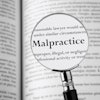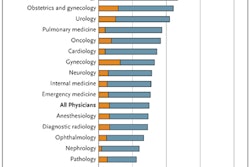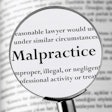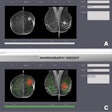
Tort reforms that make it harder to sue physicians have a stronger effect on reducing x-ray orders than reforms that directly reduce payouts for physician errors, according to a new study published online December 21 in the Journal of the American College of Radiology.
What's more, the probability of a radiography order is lower in states with a larger number of tort reform laws, researchers from the Harvey L. Neiman Health Policy Institute found (JACR, December 21, 2016).
Radiography is the most widely used imaging procedure and, therefore, offers a lens into how tort reform affects imaging overall, wrote a team led by Suhui Li, PhD, of Mathematica Policy Research in Princeton, NJ.
"While physicians cite malpractice liability as an important factor driving their decisions to order imaging tests, little research has been done to examine the systematic impact of liability pressure on overall imaging," Li said in a statement released by the institute.
Defensive medicine
Li and colleagues explored the practice of defensive medicine -- that is, medical practices that protect physicians from malpractice suits but don't necessarily benefit patients -- and the impact of liability pressure on imaging use. The team used data on individual patient visits to office-based physicians from the National Ambulatory Medical Care Survey between 1999 to 2010, as well as data on tort reforms from the Database of State Tort Law Reforms.
The group found that primary care physicians (PCPs) ordered fewer x-ray exams when states implemented caps on noneconomic damages, periodic payment reforms, and the total number of tort reforms.
"When states enact indirect tort reforms, reforms that make it harder to sue physicians have a stronger effect on radiography orders than reforms that directly reduce physicians' liability payoff for both PCPs and specialists," said contributing author Danny Hughes, PhD. "We also found that the probability of a radiography order was lower in states with a greater number of tort reform laws."
Li's team discovered that primary care providers and specialists respond differently to tort reforms, which may be due to underlying differences between the two physician groups in their patient mix, office type, and even practice setting. The researchers also found that physicians tend to reduce x-ray orders following the enactment of tort laws, and they increase orders following a reversal of a tort reform.
"Our analysis suggests that reforms that make it harder to sue physicians have a stronger impact than reforms which directly reduce physicians' malpractice claim payments," Hughes said.



















